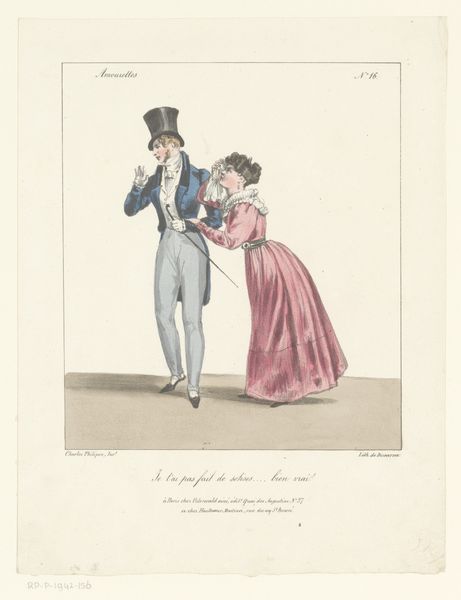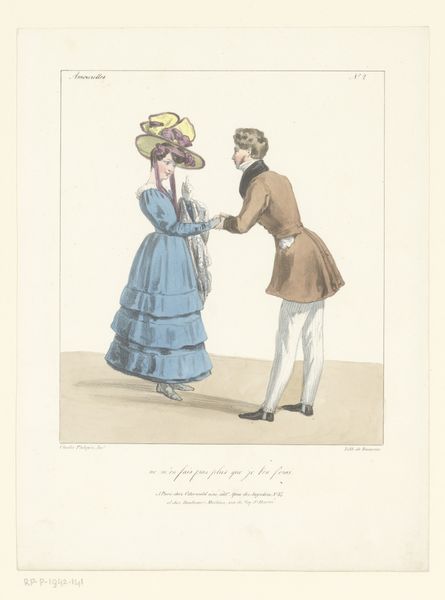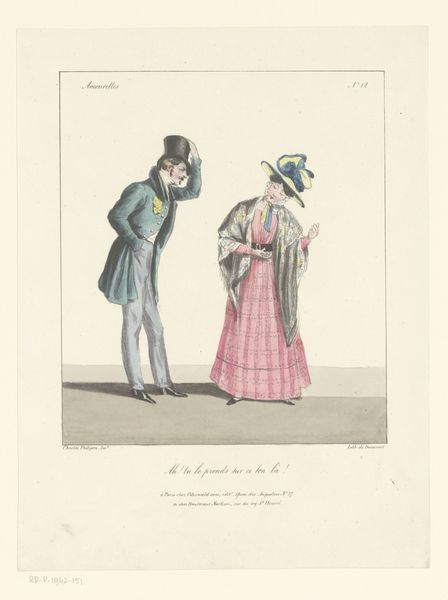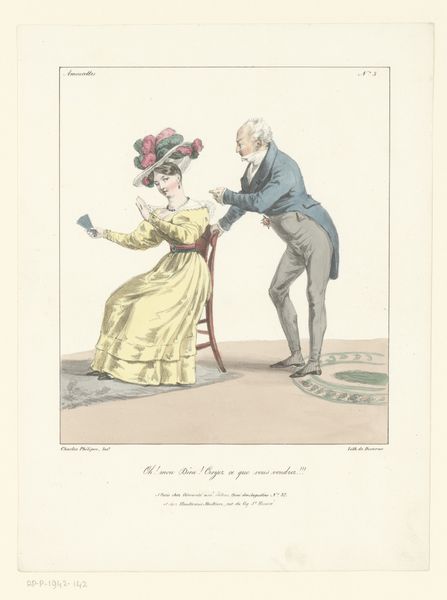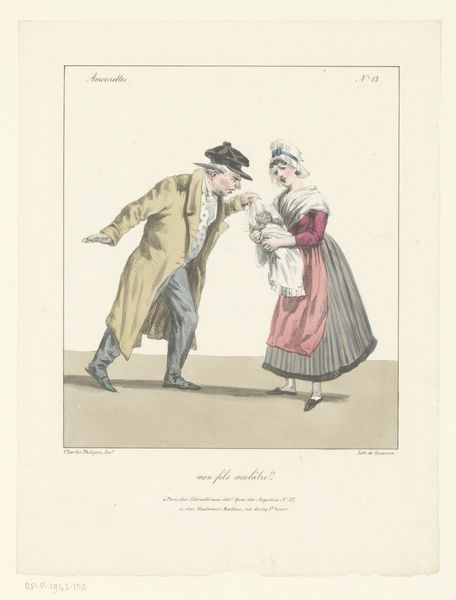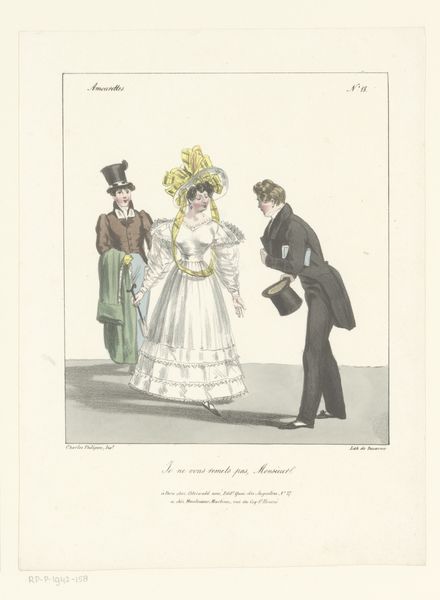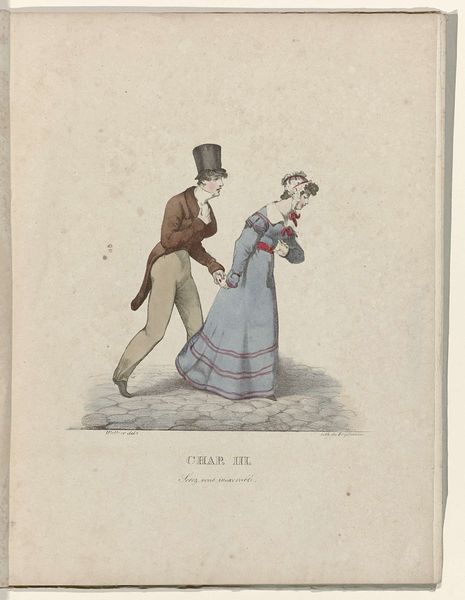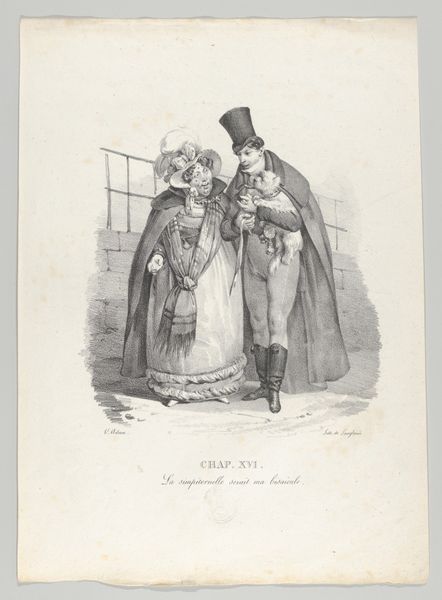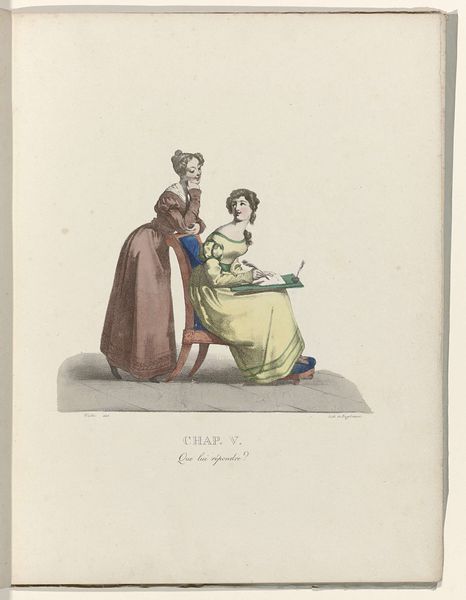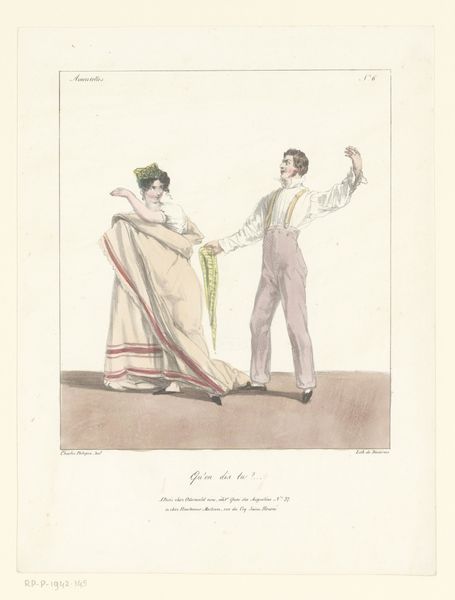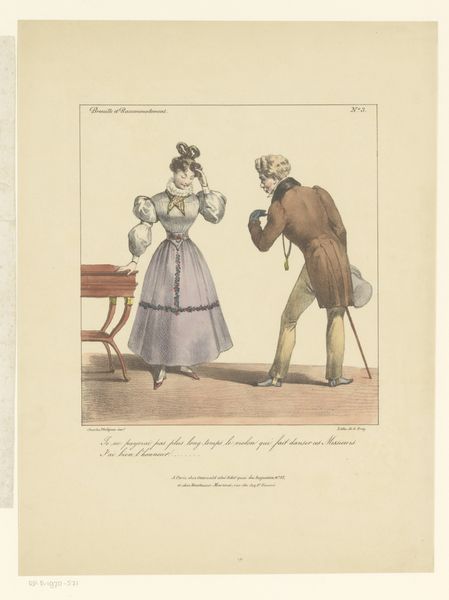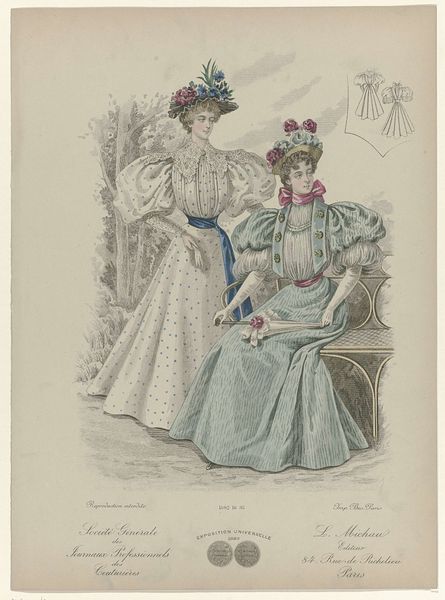
lithograph, print
#
lithograph
# print
#
caricature
#
figuration
#
romanticism
#
genre-painting
#
cartoon carciture
Dimensions: height 295 mm, width 222 mm
Copyright: Rijks Museum: Open Domain
Editor: So, this is "Man praat tegen vrouw," a lithograph from 1827-1829 by Charles Philipon, currently held at the Rijksmuseum. The man and woman appear to be in disagreement. The artist's line is humorous, maybe satirical. What's your take on this, considering its historical moment? Curator: Well, situating this print within the socio-political landscape of the time is crucial. France was in a period of Restoration, a return to traditional hierarchies after the revolution. Do you notice how the artist uses caricature? The exaggerated features hint at a commentary on societal roles. Editor: I see that now! The man looks flustered and the woman almost passive, despite her ornate outfit. Is that commentary on gender roles in the 19th century? Curator: Precisely! Think about the restricted lives of women then, confined to domestic roles and judged on appearance. Philipon, through his caricature, seems to be challenging those rigid expectations. What do you make of the text accompanying the image? Editor: The text reads “Always my cousin here, my cousin there!”. I see that the woman may have an affiliation with a person, who the man knows too. Could the print be commenting on a relationship with a clear imbalance of power, as women needed a male figure by their side at this point in time? Curator: An interesting perspective! By using everyday interactions, it subtly undermines the prevailing norms. What does that tell you about Philipon's position as an artist and social critic? Editor: He's using art to spark conversations, maybe even dissent. He seems to give the lady character a slight advantage due to his neutral, unimpassioned visual characteristics compared to those of the man. Curator: Exactly! And that's the power of art as activism, prompting us to question established structures, and gendered imbalance. I learned from our dialogue that it has changed to include political viewpoints. Editor: Agreed! Thinking about it intersectionally brings so much more to light.
Comments
No comments
Be the first to comment and join the conversation on the ultimate creative platform.
